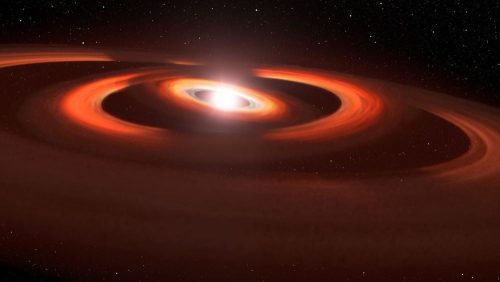
The fascinating world of celestial bodies has always intrigued astronomers and space enthusiasts alike. In the midst of this cosmic wonder, the newborn star TW Hydrae, located approximately 200 light-years away from Earth, has become a subject of great interest.
The Hubble Space Telescope (HST) has provided valuable insights into this stellar infant, revealing a slightly weird-looking protoplanetary disk surrounding the star.
In 2023, astronomers made a groundbreaking discovery – TW Hydrae’s disk contains at least two, and possibly three “sub” disks, hinting at the formation of planets.
This article delves into the remarkable findings and the implications they hold for understanding our own solar system’s origins.
- The Mystery of TW Hydrae’s Protoplanetary Disk
TW Hydrae, classified as a “T Tauri” star, belongs to a group of variables no older than 10 million years, making it part of the “pre-main-sequence” stars.
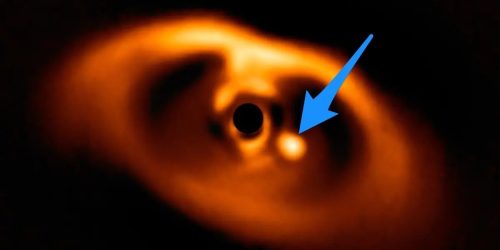
Its protoplanetary disk, composed of gas and dust, plays a crucial role in feeding the young star and possibly forming planets.
HST observations revealed a shadow sweeping across the disk, indicating the presence of an inner and larger outer disk.
- Unveiling the Shadows and Misaligned Disks
In 2017, astronomers observed a shadow on the outer disk, cast by the inner disk, in a fascinating display of gravitational interactions.
However, recent observations in 2023 unveiled an additional shadow, suggesting the presence of another disk within the system, along with potential planets.
The explanation lies in two misaligned disks, each casting its shadow.
The gravitational pull of the two possible planets, in slightly different orbital planes, has caused the disks to become misaligned over time.
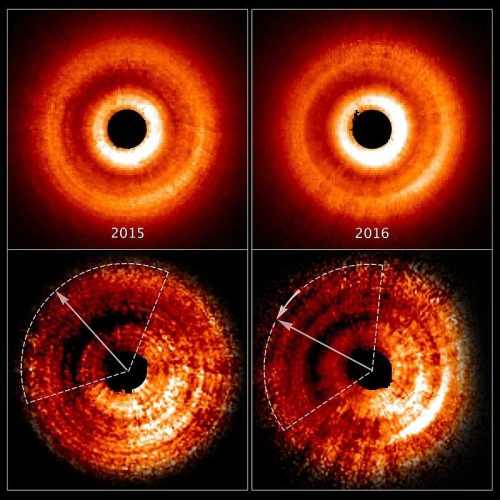
- TW Hydrae’s Resemblance to Our Solar System
The peculiar configuration of TW Hydrae’s protoplanetary disks bears striking similarities to what our own solar system might have looked like more than 4.5 billion years ago.
The misaligned disks and interactions between possible planets provide astronomers with a valuable clue to the dynamics that shaped our solar system’s early formation.
- The Role of Planetary Lap
The observed structures within TW Hydrae’s disks suggest a possible phenomenon known as “planetary lap,” wherein planets influence each other’s orbits as they circle the central star. The gravitational interaction of two planets in close proximity to each other could explain the misalignment and shadow-casting behavior observed in the system.
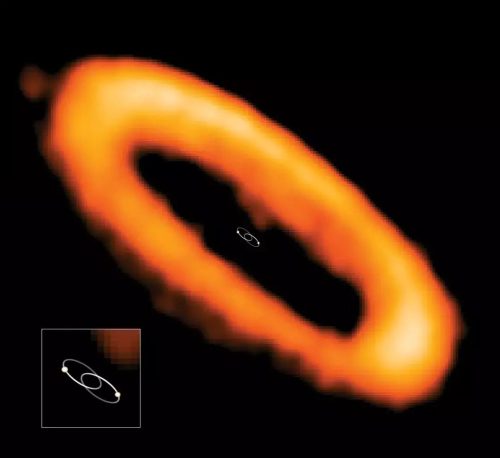
- Prospects for Further Studies
The implications of TW Hydrae’s intricate disk structures and planet-forming potential have ignited enthusiasm among astronomers.
Continued studies using the Hubble Space Telescope, the Atacama Large Millimeter Array, and upcoming telescopes like the James Webb Space Telescope (JWST) and ESA’s Gaia space observatory, promise to unravel more details about this newborn star’s planetary system.
- Looking to the Future
The remarkable findings surrounding TW Hydrae demonstrate how exploration and observation of distant stars continue to deepen our understanding of the universe’s complexity.
As astronomers venture further into the mysteries of celestial bodies, TW Hydrae stands as a testament to the potential of young stars and their protoplanetary disks to offer valuable insights into the origins and evolution of planetary systems.
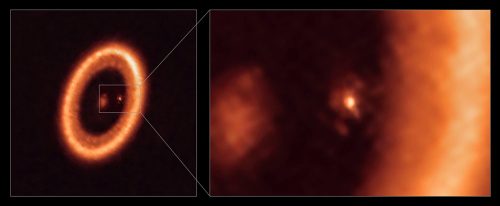
The discovery of multiple “sub” disks and potential planets within TW Hydrae’s protoplanetary disk has added a new chapter to our understanding of star and planet formation.
The intricate interactions between disks and planetary objects offer a glimpse into the dynamic processes that shaped our own solar system billions of years ago.
As scientists continue to study this fascinating newborn star and its developing planetary system, the quest to unveil the mysteries of the cosmos remains an exciting journey of exploration and discovery.
